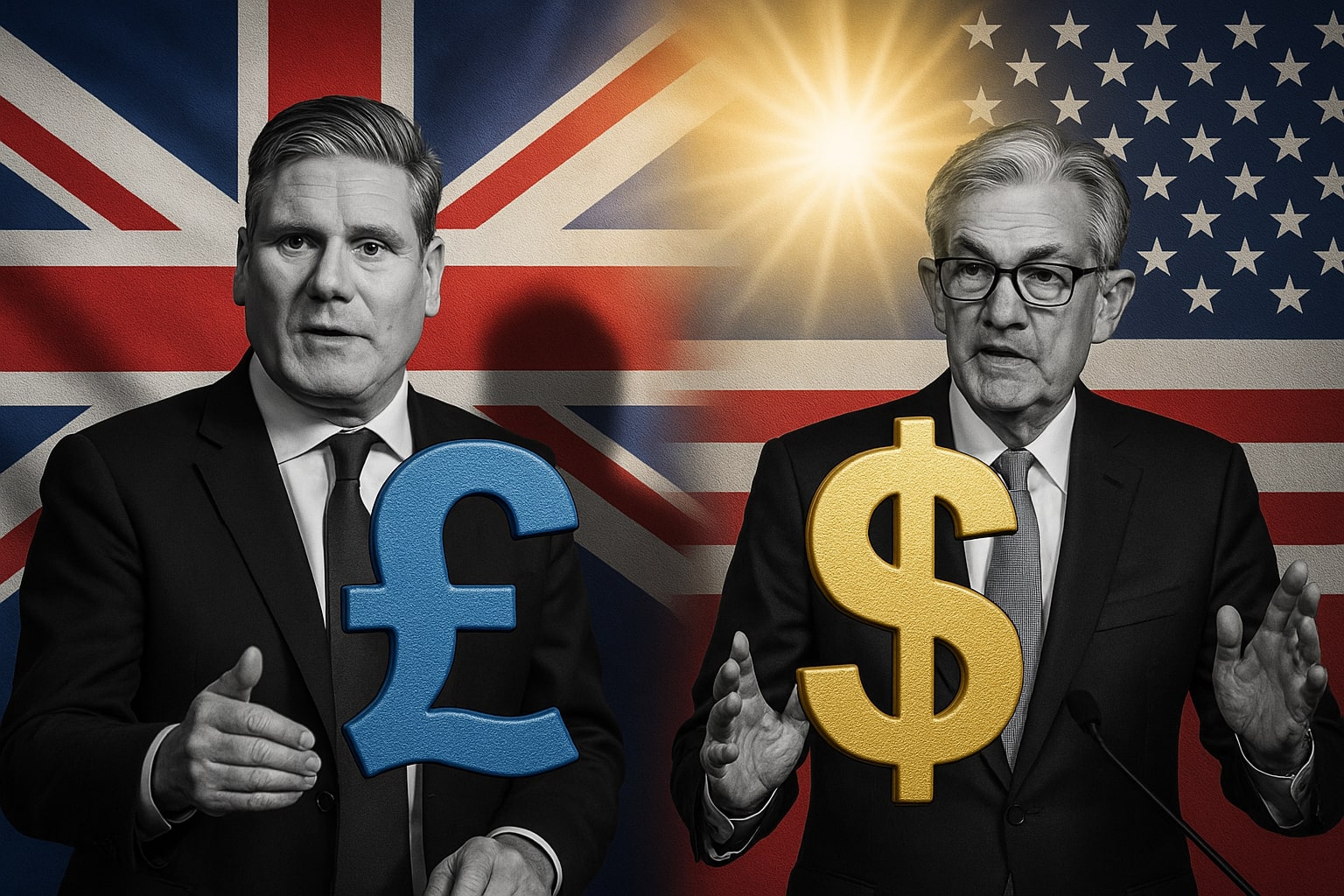
Ethereum Price Forecast: ETH-USD Pulls Back to $4,621 After $4,953 High, Eyes $6,500
Ethereum cooled after a record $4,953 peak, but $2.79B ETF inflows, corporate treasuries, and Fed cut bets keep momentum alive with $6,500 targets in focus | That's TradingNEWS
Ethereum (ETH-USD) Price Rally Cools After New All-Time High
ETH Breaks Records Then Pulls Back
Ethereum (ETH-USD) has just rewritten the charts, hitting a new all-time high at $4,953 on August 23 before retreating to around $4,621 today, a decline of roughly 3.8% in the last 24 hours. The rally marked the first time ETH has broken through its 2021 peak of $4,951, extending a run of more than 250% since the April low near $1,300. The surge was driven by a combination of institutional capital inflows into spot ETH ETFs, which recorded nearly $2.79 billion in August net inflows, and a dovish Federal Reserve pivot that sent risk assets higher. In contrast, Bitcoin ETFs faced $1.2 billion in outflows, underscoring Ethereum’s rising dominance, which has grown 5.9% in the last 30 days at Bitcoin’s expense.
ETF Demand and Corporate Treasuries Fuel Momentum
Ethereum’s rise is not just a speculative push; it is increasingly backed by deep-pocketed institutions. Spot ETH ETFs have now attracted $8.2 billion in cumulative inflows since July, compared with only $4.8 billion for Bitcoin ETFs over the same stretch. Major corporate treasuries are also stepping in: SharpLink Gaming disclosed holdings of 379,591 ETH worth about $3.4 billion, while BitMine added over $7 billion to its balance sheet. These treasury moves, combined with ETF flows, have transformed ETH into a quasi-reserve asset for both corporations and funds. Unlike prior cycles where ETH’s rallies were retail-led, this cycle is visibly institution-driven, which explains why ETH continues to outperform even as Bitcoin consolidates near $112,000.
Technical Structure: Support and Resistance Levels
After reaching the $4,950 zone, Ethereum slipped back into the $4,600–$4,650 range, but the pullback resembles consolidation rather than reversal. On the 4-hour chart, ETH continues to trade inside an ascending channel with the 20-day EMA near $4,500 acting as support. The RSI hovers around 60, keeping momentum constructive without breaching overbought territory, while the MACD remains in bullish alignment. Analysts identify $4,500 as immediate support, with deeper cushions at $4,225 and $4,100. On the upside, $4,780 remains the first resistance hurdle, followed by the psychological $5,000 level. If ETH closes above $5,000 on weekly charts, forecasts stretch toward $5,500–$6,700 in the near term.
On-Chain Metrics: Whales Accumulate, Exchange Outflows Rise
Glassnode data confirms that Ethereum is leaving exchanges at pace, with -138,656 ETH net outflows reported last week. This suggests large holders are moving coins into cold storage, reducing sell pressure. Whale behavior has shifted notably since ETH broke out in early August: Binance data shows large addresses began accumulating only after the bullish trend was validated, reinforcing confidence in continued upside. This buying coincides with shrinking ETH balances on exchanges, a historically bullish signal. At the same time, over $216 million in leveraged long positions were liquidated during the brief dip from $4,953, flushing out weak hands while leaving whales to add exposure at discounted levels.
Macro Drivers: Powell’s Dovish Pivot and Rate Cut Bets
Jerome Powell’s Jackson Hole speech proved the key macro catalyst, as the Fed chair acknowledged “rising downside risks” to employment and suggested policy may need adjusting. Fed funds futures now price in a 90% probability of a September rate cut, up sharply from 72% before his remarks, with traders betting on at least two cuts by year-end. For Ethereum, which thrives in environments of lower yields and stronger liquidity, this pivot represents an accelerant. As borrowing costs ease, risk appetite rises, and flows into high-beta assets like ETH accelerate. This narrative has been magnified by social media influencers and prominent fund managers who now call ETH “the preferred play” over Bitcoin for this policy cycle.
Historical Seasonality: September Weakness Looms
Despite the optimism, historical patterns warn of volatility. ETH has a tendency to give back August gains in September, with CoinGlass data showing multiple instances of sharp September retracements. Yet, the difference this year lies in the presence of spot ETH ETFs and corporate treasury adoption, factors that did not exist in prior cycles. These structural supports may offset seasonal weakness, creating conditions where ETH consolidates rather than collapses. If support at $4,500 holds into September’s macro data releases—particularly U.S. PCE inflation—the setup favors another breakout attempt toward $5,200–$5,500.
Ethereum vs. Meme Token Spillover
Ethereum’s price momentum has also reshaped flows into meme tokens and smaller projects. PEPE, valued at $4.6 billion, has tracked ETH’s movements but lacks technical depth, while emerging Layer-2 projects like Brett have attracted speculative inflows on the back of ETH’s ecosystem expansion. However, ETH itself remains the primary liquidity engine: if ETH breaches $5,000 and holds, spillover effects could lift the broader altcoin complex into another leg of rally. Conversely, a sharp ETH rejection would likely pressure the memecoin sector first, exposing its fragility.
ETH-USD Price Forecast
Ethereum’s path remains defined by institutional ETF demand, whale accumulation, and Fed-driven liquidity shifts. The all-time high at $4,953 is no longer resistance but a pivot point, with $5,000 as the next litmus test. As ETH consolidates near $4,621, the market sits at an inflection: either a breakout toward $6,500 in Q4 or a pullback into the low $4,000s. With fundamentals stronger than in any prior cycle, Ethereum (ETH-USD) is positioned as the most institutionally validated trade in crypto today.
That's TradingNEWS
Read More
-
Baidu Stock Price Forecast - Bidu at $120 AI, Chips and Robotaxis Clash With China Macro Fears
15.12.2025 · TradingNEWS ArchiveStocks
-
XRP Price Forecast - XRP-USD Holds $1.90 Support as Bulls Target a Break Toward $2.60–$2.70
15.12.2025 · TradingNEWS ArchiveCrypto
-
Oil Price Forecast - Oil Slip Toward $60 as Oversupply Grows and Tanker Rates Explode
15.12.2025 · TradingNEWS ArchiveCommodities
-
Stock Market Today - Dow, S&P 500 and Nasdaq Futures Climb as Gold and Tsla Stock Jumps and Wall Street Awaits Jobs Data
15.12.2025 · TradingNEWS ArchiveMarkets
-
GBP/USD Price Forecast - Pound Holds 1.34 Ahead of BoE 3.75% Cut and Key US Jobs Data
15.12.2025 · TradingNEWS ArchiveForex


















